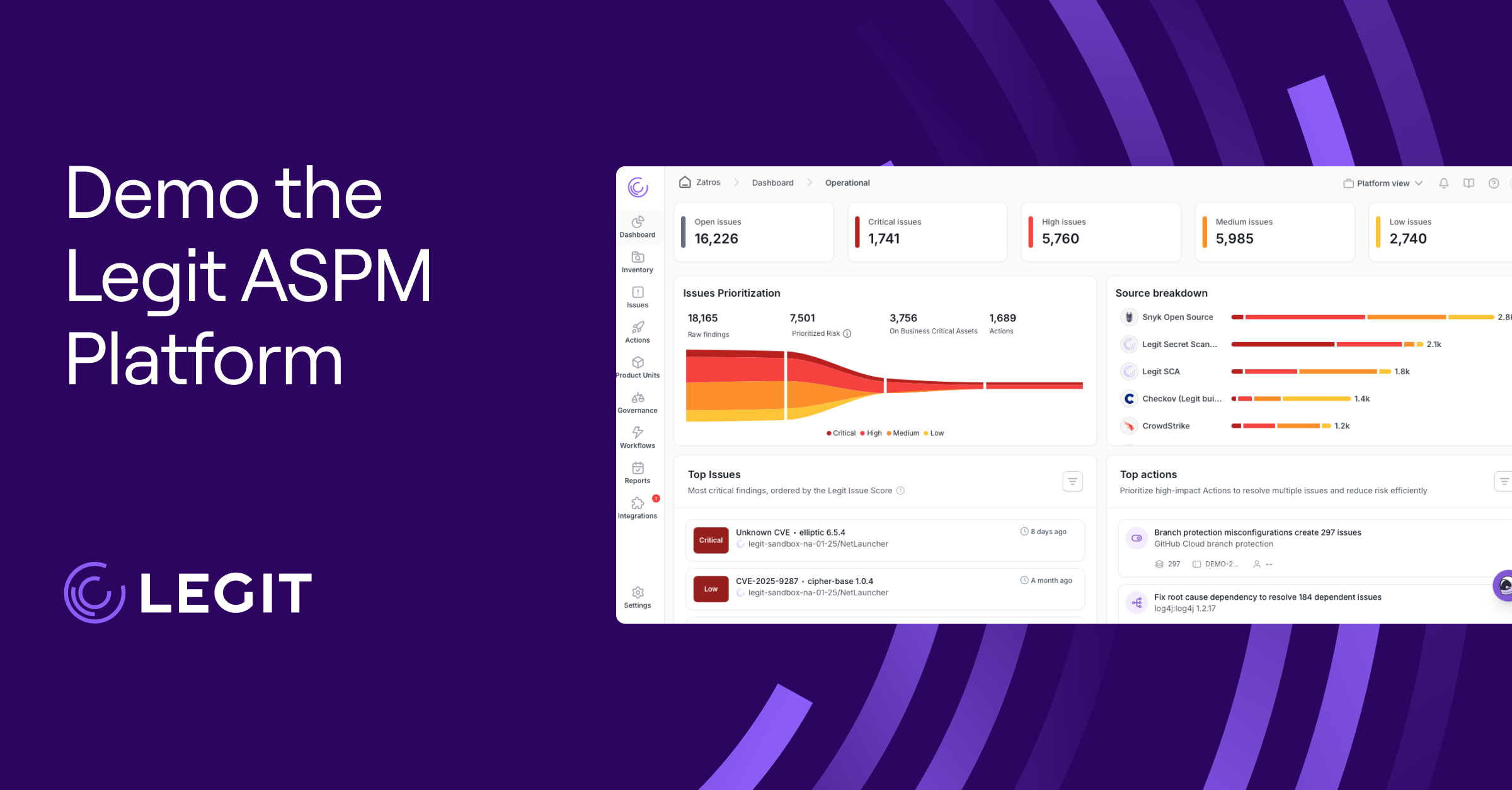Developers love open-source software (OSS) for its flexibility, creative potential, and constantly growing community. Unfortunately, this freedom also introduces risks and security vulnerabilities that could delay workflows or compromise your systems.
OSS threats can be damaging, but that doesn’t mean you should avoid this useful software. Understanding and proactively addressing these risks lets you take advantage of everything these tools have to offer while protecting your security posture.
Explore the 10 most common open-source software risks, the features of trusted OSS tools, and ways to reduce vulnerabilities.
What Is Open-Source Software?
Open-source software makes its source code universally available, giving anyone the ability to view, modify, and distribute it. This differs from standard software, also known as proprietary software, which keeps its source code strictly confidential.
OSS is an attractive option for many companies, providing necessary features without the price and vendor lock-in of proprietary software. Any type of tool can be OSS, from internal apps to global customer-facing platforms. In fact, platforms like Linux and Wordpress are open source.
While OSS offers plenty of benefits, businesses need to be mindful of which tools they choose. Open-source platforms invite anyone to contribute, which could result in poor developer practices and errors. They also lack the consistent support of proprietary tools, as they have no dedicated maintenance team.
10 Open-Source Software Issues and Risks
OSS fuels endless company processes, making it an increasingly large target for attackers. Here are the most common threats to open-source software security.
1. Compromise of Legitimate Package
A compromise of legitimate package makes safe packages unknowingly dangerous. Bad actors inject malicious code into a trusted open-source component, then push updates and modifications that developers unknowingly download, spreading the threat further. This typically happens through an account hijack. Basically, an attacker gains access to a project maintainer’s profile and discreetly infects software packages.
These attacks can cause widespread system compromise and data breaches. Many developers and companies use OSS, and a malicious update can quickly impact thousands of organizations at once.
2. Vulnerabilities Are Public Domain
OSS often keep vulnerabilities in public places, giving bad actors more insights into weaknesses. Disclosing flaws in forums and the National Vulnerability Database boosts community visibility. It’s a common practice in developer circles, but this transparency allows savvy attackers to target specific areas.
A real life example is Log4Shell, a vulnerability that was publicly disclosed in 2021. Bad actors used this information to remotely execute code on vulnerable systems, leading to over 100 attacks per minute at its peak.
3. Name-Confusion Attacks
Name-confusion attacks trick people into downloading malicious software. Bad actors create OSS components with names similar to safe packages. Then, users misread and download them, infecting their own systems by mistake.
The most common name-confusion techniques are typosquatting and brandjacking. With typosquatting, attackers use a small misspelling of a package name to fool users. For example, uploading a file named “main file” instead of the legitimate “main-file.” Brandjacking, on the other hand, is when someone adopts a company’s name and logo to trick users and spread malicious files.
4. Untracked Dependencies
These are components that programs don’t manage or monitor, making them effectively invisible to most scanners and trackers. Commonly, untracked dependencies stem from copy/pasted third-party code or files that aren’t managed by a version control system. These elements are virtually undetectable, so they can move through software unupdated and unoptimized, posing a risk to total security.
5. Outdated or Unmaintained Code
A simple problem that can have a significant effect: outdated software. Many open-source projects slow down and lose developers, resulting in lackluster maintenance. Threats get stronger every day, and if OSS doesn’t have regular care, it can lack fundamental security features present in most modern tools.
6. License and Legal Pitfalls
OSS vary in their licensing freedom, which can lead to legal issues when they don’t line up with company practices. Some open-source platforms require people to publicly disclose any alterations, but many businesses keep their practices private. This is a direct conflict, and if companies don’t fully understand the licensing rules of an OSS, they could face damaging legal issues.
7. Immature or Low-Quality Projects
Some projects are rough, whether the developers are new to coding or they just skipped a vital check. Immature software might work on the surface, but it may lack crucial steps like code review and thorough versioning. Certain OSS tools look attractive on the outset, but after careful inspection, you might find it suffers from poor practices that can lead to security risks and delays.
8. Inadequate Version Pinning
Developers may use version ranges rather than specific version numbers to simplify their updates. For instance, someone may name an update “Package 1.2” when it’s actually version 1.2.5. This already reduces user clarity, but it’s even more damaging with automatically updating programs. Software may ignore vital updates, as the system believes it has the newest, most secure version.
9. Overprivileged Packages
OSS may ask for permissions it doesn’t need. Some software may claim it requires access to network calls or sensitive information when it doesn’t use them, which can lead to breaches. Carefully review every software permission before installing it, and if you aren’t sure, err on the safe side and avoid it.
10. Lack of Provenance
OSS isn’t always verifiable, even if it seems trustworthy. Examine each package to discover its history, author, and coding techniques to make sure it’s authentic and safe. Look for active OSS communities with frequent updates and communicative developers—these are usual signs of healthy, credible projects.
4 Features of an Assured Open-Source Software
Here are a few elements of a strong OSS that follows secure best practices.
1. Provides Detailed Data
Trustworthy OSS provides transparent, verifiable metadata. It should describe what you’re using, how developers made it, and when it was last updated. This data should also disclose the entire dependency chain and any discovered vulnerabilities.
2. Is Developer-Friendly
OSS should encourage secure, speedy development. User-friendly packages have thorough documentation, straightforward guidelines, and an active community. They often also provide simple frameworks and use established, predictable language to help teams get started fast.
3. Uses Verified and Secure Distribution
Good OSS providers also share files through secure distribution platforms. Credible packages should pass through verified channels that ensure your code matches the original approved software—no stops along the way.
4. Aligns With Compliance and Supply Chain Standards
If you’re bringing these tools internally, OSS must meet regulatory standards. They should align with the SLSA framework and meet your company’s required compliance. For example, if you accept or process cardholder data, you’ll need software that complies with the Payment Card Industry Data Security Standard.
How to Reduce Open-Source Software Security Risks
Here are a few smart tips to boost security in open-source software:
- Review OSS licenses: Examine the open-source license of tools before downloading. Make sure your entire team understands its requirements and terms to avoid legal issues.
- Update components regularly: Stick to an update schedule to check for new OSS versions and maintenance. If a component goes too long without an update, swap it out for a verified, actively maintained tool.
- Train developers on best practices: Make sure your team understands how OSS works and what to look out for. Licensing and updating protect you externally, but training team members to avoid risks like embedded credentials and unverified input bolsters security internally.
- Scan OSS components: Review your software with software composition analysis tools. These platforms help you discover vulnerabilities, outdated components, and compliance weaknesses early.
Ensure OSS Safety With Legit Security
Legit Security lets your team enjoy the flexibility of OSS and maintain total control. This platform performs regular security checks in your workflows, helping you spot risks, track usage, and promote compliance.
Don’t just find issues—understand them. Legit provides visibility through detailed risk reports, using smart AI context to prioritize and score each threat. It can then execute remediation workflows, automating ticketing and team collaboration.
Secure your systems, hassle-free, with Legit Security. Book a demo today.
Download our new whitepaper.


